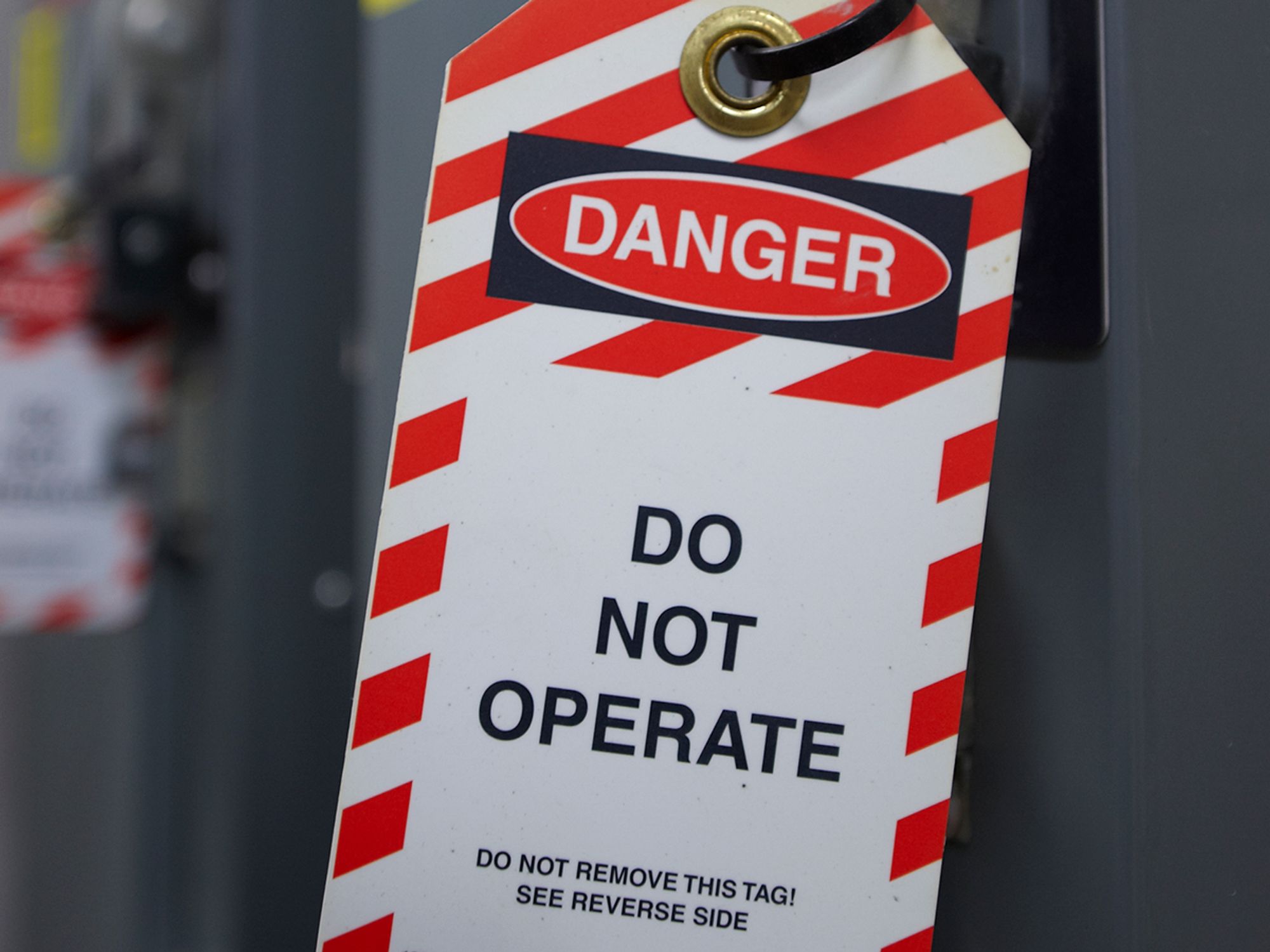Tag elements

- The primary elements of a tag are its signal word and message panels.
A tag must have a signal word and message panels but may use three additional types of panels:
- Signature block
- Safety symbol
- Border
A panel is a portion of a safety tag that has a background color that differs from the colors of adjacent areas, or that is separated from adjacent areas by white space, a border, or a line.
Signal word panel
The signal word panel includes the signal word, along with the safety alert symbol (when used). The signal word refers to the part of a tag that contains the word or words, like DANGER or CAUTION, intended to capture the employee’s immediate attention. The Occupational Safety and Health Administration (OSHA) and American National Standards Institute (ANSI) provide specifications for signal words that overlap significantly but not entirely.
OSHA offers the following signal words for tags:
- DANGER — Used only in major hazard situations where an immediate hazard presents a threat of death or serious injury to employees.
- WARNING — May be used to represent a hazard level between CAUTION and DANGER, with an appropriate message.
- CAUTION — Used only in minor hazard situations where a non-immediate hazard, potential hazard, or unsafe practice presents a lesser threat of employee injury.
- BIOLOGICAL HAZARD/BIOHAZARD — Used to identify the actual or potential presence of a biological hazard and to identify equipment, containers, rooms, experimental animals, or combinations thereof, that contain or are contaminated with hazardous biological agents.
OSHA allows other tags to be used in addition to these, or in situations where tags are not required, provided that they do not detract from the impact or visibility of any required tag.
ANSI also offers the DANGER, WARNING, and CAUTION signal words but also offers the following signal words:
- NOTICE — Indicates non-hazard information that is important, like property damage.
- SAFETY INSTRUCTIONS — Indicates procedures related to safety. Instead of the phrase SAFETY INSTRUCTIONS, more descriptive signal words may be used, such as LOCKOUT PROCEDURE.
The older ANSI Z35.2-1968, which OSHA accepts for construction tags, also offers the following signal words: DO NOT START, OUT OF ORDER, and RADIATION.
When used in the signal word panel, the safety alert symbol — an exclamation point inside an equilateral triangle — is provided with DANGER, WARNING, and CAUTION signal words to indicate a hazard. It is not applied on NOTICE or SAFETY INSTRUCTION tags.
Message panel
The message panel contains the major message, which means that portion of a tag’s inscription that is more specific than the signal word. This message indicates, in word text, the relevant hazardous condition or the instruction that needs to be communicated to the employee. Messages communicate hazards, the consequences of ignoring hazards, prohibitions, mandatory actions, and other information. The message panel will begin with the most important information.
The message should be concise and easy for employees to understand. Examples include:
- “High Voltage”
- “Close Clearance”
- “Do Not Start”
- “Do Not Use”
It should be noted that both OSHA and ANSI allow the employer to use a symbol panel instead of a message panel on a tag.
Signature block
The signature block is the area of a tag used to convey information such as a name, signature, date, department, and/or job-specific comments. This block is typically filled in by hand by the employee when in the field. The date(s) may relay a start date and/or completion date. The name identifies the person who authorized or applied the tag.
Safety symbol panel
The safety symbol panel contains a safety symbol(s). This panel offers a pictorial representation used to identify the hazardous condition, convey the safety instruction, or otherwise clarify or supplement the message. Symbols often capture the employees’ attention and help sidestep language barriers.
Safety symbols must contribute to the tag’s meaning, not conflict with it. The selected symbol should also be quickly understood by all employees. The symbol design for biological hazard tags must conform to the image shown below:

A symbol panel may also substitute for the message panel or part of the word message.
What’s more, many employers offer a personal photo in the safety symbol panel to assist others who need to quickly identify the employee who authorized or applied a tag. This may be the case in an emergency.
Border panel
A border color or colors may also be applied to the front and back edges. While not required, such a border may grab the attention of employees.
